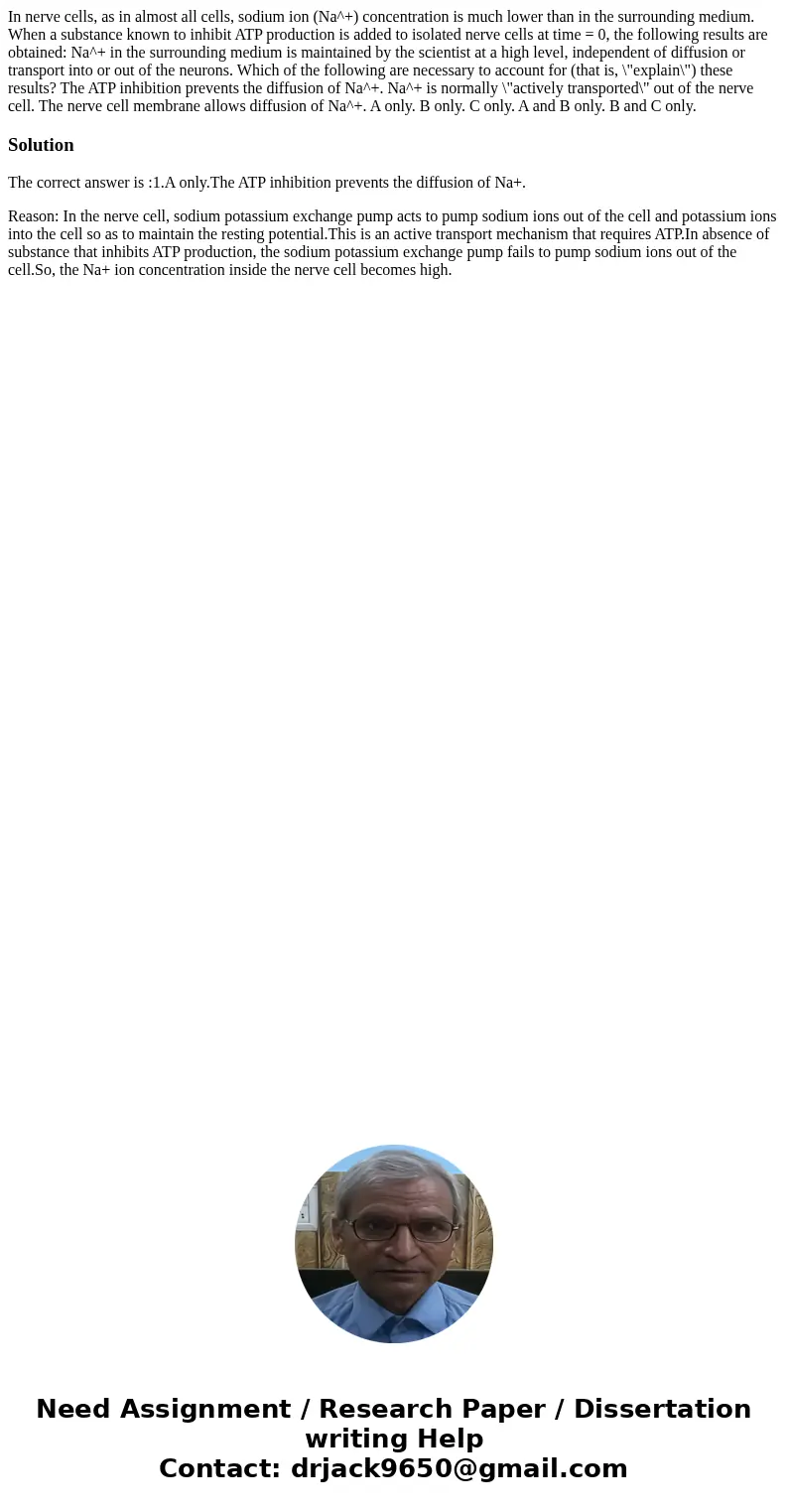In nerve cells as in almost all cells sodium ion Na concentr
In nerve cells, as in almost all cells, sodium ion (Na^+) concentration is much lower than in the surrounding medium. When a substance known to inhibit ATP production is added to isolated nerve cells at time = 0, the following results are obtained: Na^+ in the surrounding medium is maintained by the scientist at a high level, independent of diffusion or transport into or out of the neurons. Which of the following are necessary to account for (that is, \"explain\") these results? The ATP inhibition prevents the diffusion of Na^+. Na^+ is normally \"actively transported\" out of the nerve cell. The nerve cell membrane allows diffusion of Na^+. A only. B only. C only. A and B only. B and C only.
Solution
The correct answer is :1.A only.The ATP inhibition prevents the diffusion of Na+.
Reason: In the nerve cell, sodium potassium exchange pump acts to pump sodium ions out of the cell and potassium ions into the cell so as to maintain the resting potential.This is an active transport mechanism that requires ATP.In absence of substance that inhibits ATP production, the sodium potassium exchange pump fails to pump sodium ions out of the cell.So, the Na+ ion concentration inside the nerve cell becomes high.

 Homework Sourse
Homework Sourse